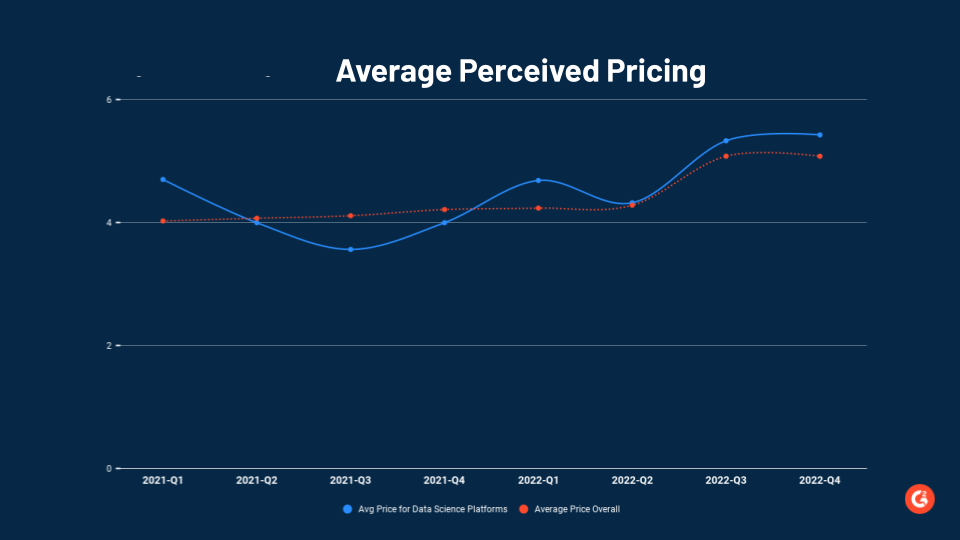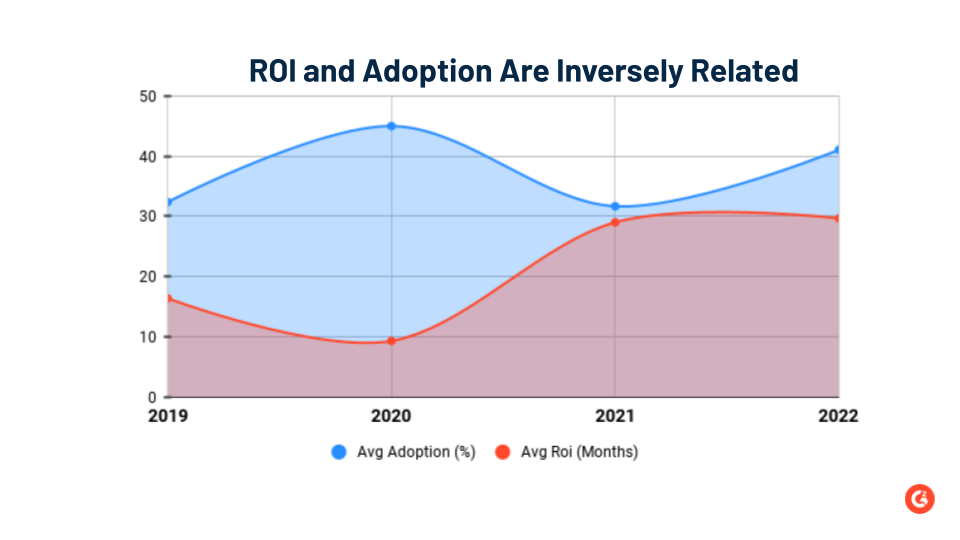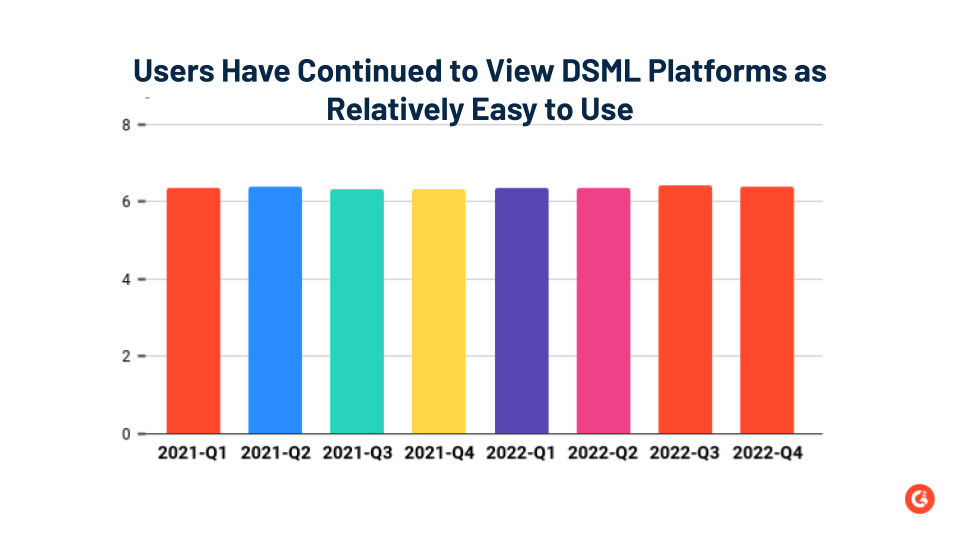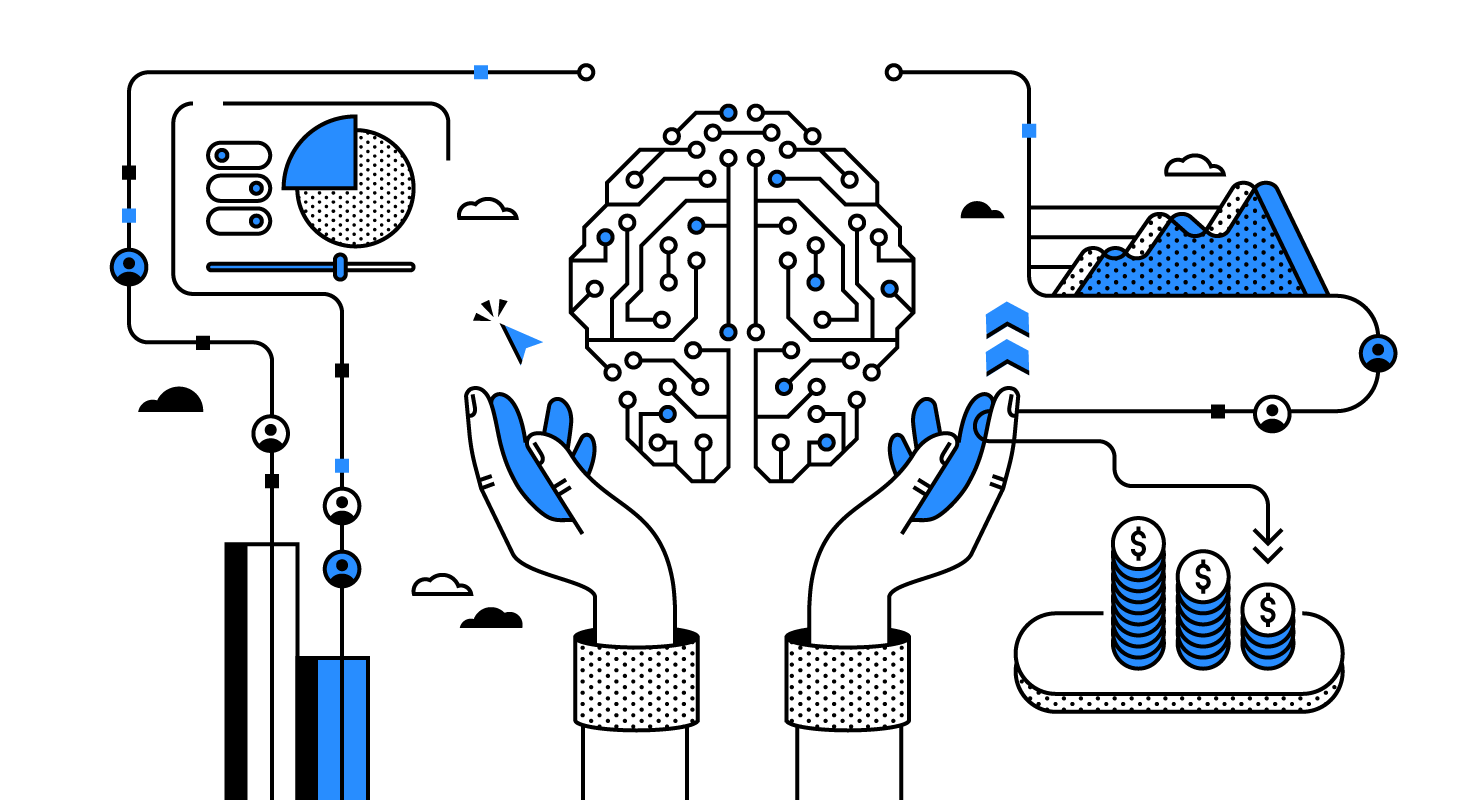This post is part of G2's 2023 digital trends series. Read more about G2’s perspective on digital transformation trends in an introduction from Emily Malis Greathouse, director, market research, and additional coverage on trends identified by G2’s analysts.
Costs and adoption of data science and machine learning platforms are intimately connected
Prediction
In 2023, we expect to see a rise in the adoption of data science and machine learning platforms, especially ones that are cheaper and easy to use.Although we saw a rise in perceived pricing in 2022 for the software, this was commensurate with the perceived pricing increases we saw across all of G2’s 2000+ categories. With easier-to-use features and low-code capabilities that bring AI superpowers to non-data scientists, increased adoption will lead to higher demand, increased competition, and lower prices.
G2 data highlights rising software costs
It is not only the Data Science and Machine Learning Platforms category on G2 that is seeing rising prices on G2. As figure 1 illustrates, on average, reviewers on G2 perceive software as more expensive in 2022 than in 2021. Overall, reviewers note that software seems to be 10% more expensive in 2022 than in 2021.

Figure 1: Perceived Pricing for DSML and Overall Average Across Categories
What can we make of this metric? Two cogent and coherent stories can be told:
- Buyers have less money to spend. Since their purses are tighter and since they are holding their wallets closer to their chests, software seems more expensive since they can’t afford to spend as much.
- Sellers have had to increase the cost of their products. As we have all seen in the supermarket with household items, software sellers are weathering the financial storm and raising prices to stay afloat.
Whether one of the points above or a combination of the two is the correct answer, one thing remains constant: since Q2 2022, DSML Platforms have remained above average regarding pricing. In other words, it is perceived as more expensive than the average software.
Adoption is also rising, but why?
Despite rising (perceived) prices, adoption is on the rise, as shown in figure 2.

Figure 2: Adoption and Average ROI for DSML Platforms
As can be seen from the data, users of DSML platforms saw record adoption rates in 2020, with reviewers noting that 45% of their users were adopting the technology. Although it saw a decrease in 2022, adoption is once again on the rise, with current 2022 rates at 41%. Across the last few years, this software has seen significantly less adoption, compared to other software categories, with the overall adoption rate across categories hovering closer to 70%.
What is clear is that as users achieve a faster ROI, user adoption increases. We predict that the sellers will attempt to focus on faster ROI, in order to improve user adoption. In turn, we believe this will lead to lower perceived pricing since the technology will spread across the business, and the perceived value will be higher. As a result, businesses will think they are getting a bigger bang for their buck, even if the prices remain stagnant. However, the prices will likely drop as well, with the increased competition between sellers vying for this business.

Figure 3: Ease of Use Score for DSML Platforms
How will adoption skyrocket, time to ROI drastically decrease, and prices drop? The key will be to provide easier-to-use solutions already in their nascent form. As figure 3 shows, users have been rating DSML platforms as relatively easy-to-use, hovering at around 6.4/7 for the past couple of years or so.
More businesses will uncover the power of AI
We are seeing the beginning of low-code and no-code AI solutions, in which less technical business users can unleash the power of AI to gain insights into their data and make robust predictions with it. As the tools become cheaper and adoption increases, more data enthusiasts can participate in data science projects, making AI projects more collaborative and more likely to succeed with broad buy-in from the business.
As businesses continue to understand how powerful this technology is and its manifold use cases, they will bring it to each and every one of their business units. This increased adoption within businesses will lead to broader industry adoption and great innovation all around. It's often said, “knowledge is power.” I say, “knowledge is business.”
Edited by Jigmee Bhutia
Want to learn more about Machine Learning Software? Explore Machine Learning products.

Matthew Miller
Matthew Miller is a research and data enthusiast with a knack for understanding and conveying market trends effectively. With experience in journalism, education, and AI, he has honed his skills in various industries. Currently a Senior Research Analyst at G2, Matthew focuses on AI, automation, and analytics, providing insights and conducting research for vendors in these fields. He has a strong background in linguistics, having worked as a Hebrew and Yiddish Translator and an Expert Hebrew Linguist, and has co-founded VAICE, a non-profit voice tech consultancy firm.
